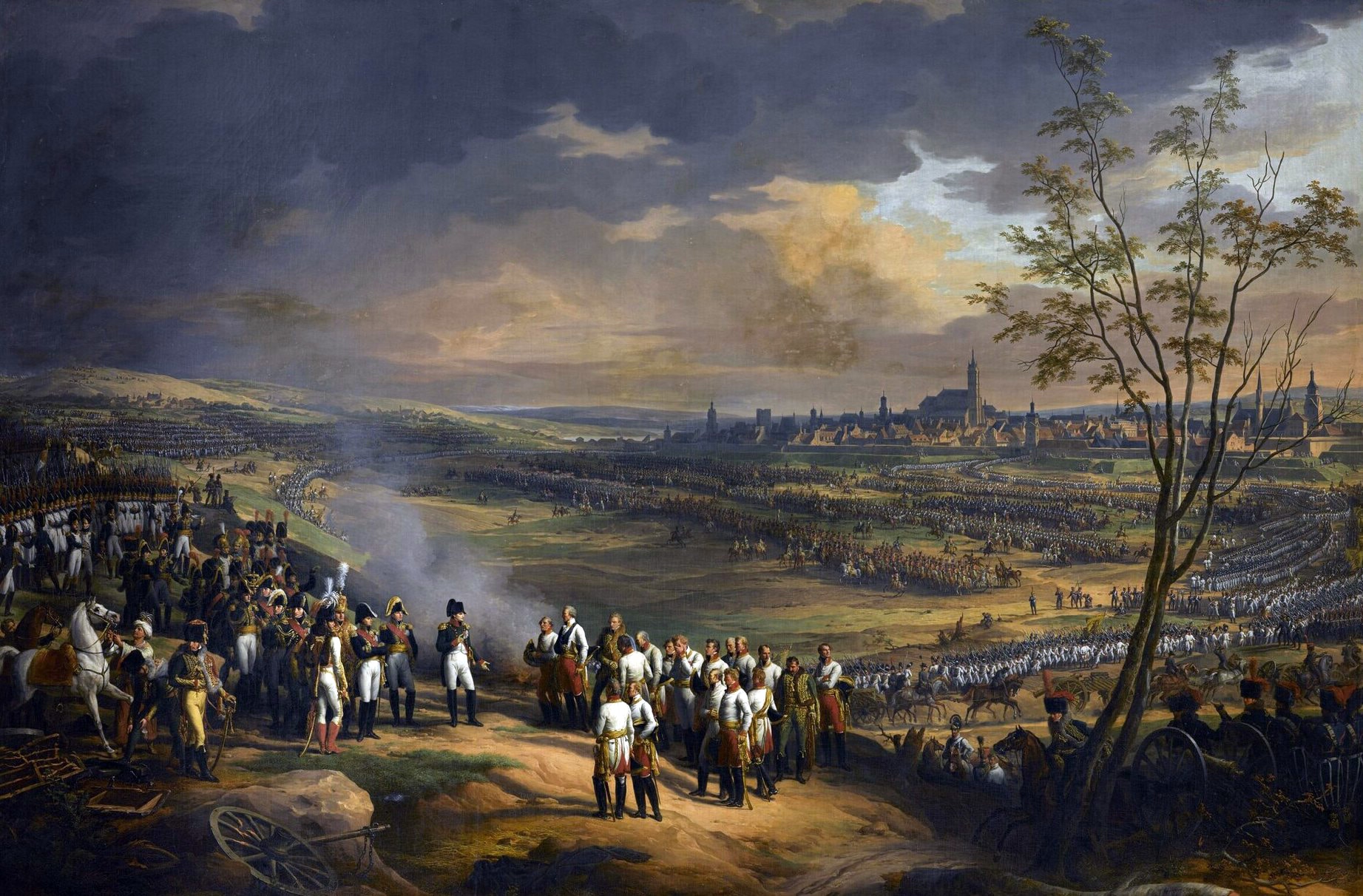Throughout the world, in all its retellings, one admires the military genius of the famed Corsican: the Battle of Austerlitz crowned Bonaparte victor exactly one year to the day after he donned the imperial diadem.
The second of December marks not merely the anniversary of one of France’s most resplendent military triumphs. It marks an era in which the map of power in Europe was redrawn. For this reason, the Battle of Austerlitz stands as a major historical event that confounded every prediction.
Never two without three: the Third Coalition
Formed in July and August 1805, this alliance united Britain, Russia, Austria, Naples, and Sweden. It followed, quite logically, the First and Second Coalitions—likewise instigated by Britain and directed against post-revolutionary France.
The Franco-British conflict between 1803 and 1805 arose for several reasons (the economic blockade imposed on Britain by France, the protectionist and annexationist policies pursued by the Hexagon toward the lands of its closest neighbours), and it ultimately led to the creation of the Third Coalition. For when Napoleon crowned himself Emperor on 2 December 1804, annexed the Italian city-states of Parma and Piacenza, and proclaimed himself King of Italy on 17 March 1805, France’s ambitions became unmistakably clear to its European neighbours.
From 1803 until August 1805, the Grande Armée encamped at Boulogne, casting the shadow of an invasion across the Channel. It broke camp when the Third Coalition was formed, which planned first the junction of Austrian and Russian forces in Bavaria. Napoleon outpaced this movement, transporting his troops to encircle the Austrian army at Ulm, which capitulated on 20 October 1805. Now Napoleon had to confront the Russians under Mikhail Kutuzov, Commander-in-Chief of the Imperial Russian Army, as well as Austria’s reserve forces.
The Sun of Austerlitz
The French Emperor was in no comfortable position. The day after his victory at Ulm, his fleet suffered defeat at Trafalgar. By mid-November, the Grande Armée—having only just entered Moravia—could not prevent the union of Kutuzov’s troops with those of Alexander I of Russia and Francis II of the Holy Roman Empire. A major confrontation loomed, and it did not favour the French.
With the bitter cold of early December 1805 came the first anniversary of the Emperor’s coronation. Celebrations were held on the eve of battle, even as the Grande Armée found itself outnumbered and manoeuvring deep in enemy territory. Everything seemed to stand against it. Napoleon therefore adopted a strategy that combined deception with an exploitation of the enemy’s weaknesses. He resolved to make a deliberate blunder so that the adversary might commit a far graver one.
The battle began at dawn to the south-east of Brünn. The enemy had massed on the Pratzen Heights, while the French occupied the lower ground. Napoleon weakened his right flank to entice the enemy to descend from the plateau. This they promptly did, despite Kutuzov’s warnings—well-founded, as it proved—that this was a tactical ruse.
His counsel went unheeded, and the Austro-Russian forces rushed down the heights, abandoning their defensive system in the hope of encircling and cornering the supposedly weakened French right. Napoleon feigned a retreat, encouraging the two emperors to press a rapid attack. Little more was needed to set disaster in motion. Napoleon then ordered the assault on the heights. His troops emerged from a mist that had favourably concealed their numbers from the enemy. They swept aside the few defenders who had remained. As a brilliant sun rose in the sky, the Russians struggled for hours to retake the plateau, in vain. Forced into retreat, some troops attempted to flee across frozen lakes; French cannon fire shattered the ice so effectively that all perished by drowning.
Enemy losses were colossal: roughly 35,000 men, against 8,000 French casualties, including 1,300 killed. Nearly all enemy artillery pieces were seized.
The Holy Roman Empire would not recover: the Treaty of Pressburg, signed on 26 December 1805, delivered a fatal blow, and it was soon replaced by the Confederation of the Rhine. Francis II of the Holy Roman Empire became Francis I of Austria. Louis Bonaparte became King of Holland, and his brother Joseph now reigned over the Kingdom of Naples.
The defeat was stinging—humiliating. A little less than sixty years later, the Second Empire commemorated the episode by naming, in 1864, a street near the Champs-Élysées the Rue du Traité-de-Presbourg.
On 2 December 1805, one year to the day after the Emperor’s coronation, this victory was not only decisive for the outcome of the conflict between France and the Third Coalition. Symbolically, it consecrated the strategist-emperor whose military genius was then universally acknowledged. Many perceived in the Sun of Austerlitz a divine intention to make Napoleon I shine. His destiny would later deny it. Until then, the Battle of Austerlitz inaugurated a military legend that continues to inspire volumes.
Soldiers! I am satisfied with you. At the Battle of Austerlitz you justified all that I had expected of your intrepidity; you have adorned your eagles with immortal glory. […] My people will welcome you back with joy, and it will suffice for you to say, ‘I was at the Battle of Austerlitz,’ for the reply to be, ‘There goes a brave man.’
Napoleon I, excerpt from the proclamation after Austerlitz, 12 Frimaire Year XIV (3 December 1805)
Marielle Brie de Lagerac
Marielle Brie de Lagerac est historienne de l’art pour le marché de l’art et l'auteure du blog « L'Art de l'Objet ».


